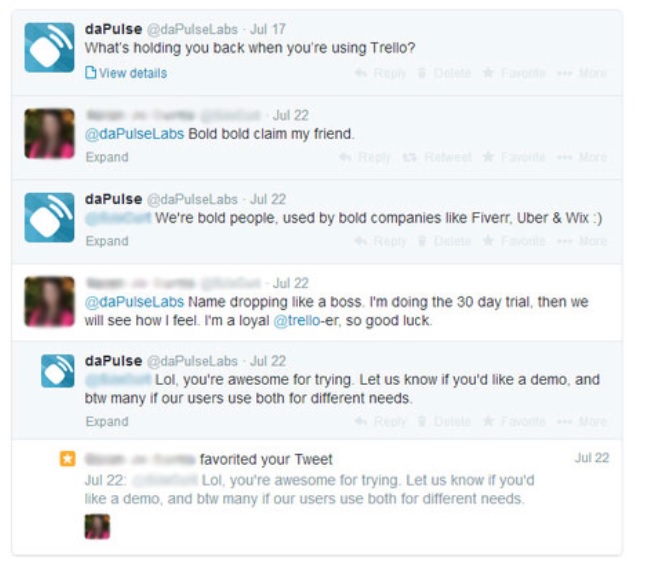F**k Vogue. That was the idea. It was 2009 and we were looking for the right messaging for Sense of Fashion. A messaging that would resonate with our potential users. And since it was a marketplace for independent fashion, with early fashion bloggers and avant-garde designers, we wanted to get the message across that here was a place where fashion was being built from the bottom up.
We wanted to say that there was now a new generation, one that didn’t need Vogue to tell it what to wear, because it was more cutting edge than Vogue could ever be. We thought up a hashtag: #TFVG — The F**k Vogue Generation. We came up with some slogans like Your Grandmother Took Styling Advice From Vogue and Don’t Clone Yourself. We didn’t think these up because we hated Vogue. We loved Vogue as much as the next person standing in line to enter NYFW Barneys Sale. We thought these up because we were looking for something that would grab the attention of our potential users. Something that would get them to listen. We needed to get our foot in the door, and name-dropping the ultimate fashion authority — Vogue — and in a provocative way, was a shortcut.
Aim first, shoot later
When creating a messaging aimed at getting your foot in the door — provocative messaging — you need to choose wisely. Sure, you want to grab the attention of potential users, but you need to do it in a way that tells them something real about yourself — the currently small and mostly unknown brand. So what you’re looking for is not just any big competitor, but the one competitor who will give you context. The context for Sense of Fashion was that Internet was disrupting fashion, via communities like LooBook.nu and Chictopia — both founded in 2008 — and retailers that allowed shoppers to be the buyers such as ModCloth and child bloggers like Tavi Gevinson who started StyleRookie in 2008. That’s why the authority that calls the shots about fashion, as it was so well depicted in The Devil Wears Prada (The book from 2003 and the movie from 2006) was the right choice for us.
Unfortunately, we never got to find out whether this messaging would have worked for us. Despite the fact that our retail-industry investor — a man who sat on the board of L. Brands Inc., owners of Victoria’s Secret — loved it, the idea fell through. Our new US Marketing adviser nipped it in the bud. “We are not an angry company”, he said in his most educational tone of voice, and the board got cold feet, mistaking a messaging tactic that smelled like teen spirit for anger.
Now, at daPulse, I got another go at this. We are not an angry company either, but we are still a mostly unknown company, with fewer than 500 customers. We need all the help we can get to attract the attention of potential users. So we came up with a campaign titled Better Than Trello.
We’re not the first company to come up with this: Both Desk and Freshdesk claim they are Zendesk alternatives. KissMetrics took on Google Analytics. Sendinblue — an email marketing tool popular in France — brands itself as a MailChimp alternative and Just Add Content says it’s a WordPress alternative for small businesses.
Choosing the right competitor to position yourself against is very important. We, for example, chose Trello for three reasons:
1) Because it’s a fantastic tool, and therefore has fantastic users.
2) Because it’s too big to give a damn about us.
3) Because Trello is our context. It is a fantastic tool for task management, and our tool starts exactly where Trello ends.
Getting your foot in the door
Your number one goal when launching a provocative messaging campaign is engagement. You want to get your foot in the door. As I mentioned earlier, you need to take on the competitor who will get you the precise context you need. But when choosing that competitor, there is another factor you need to take into account: emotions. For the provocative messaging to work, it needs to be, well, provocative. And that means it needs to stir up emotions.
So you need to choose a competitor with loyal users who feel strongly about it. Every time we run our Better Than Trello campaign on Twitter, we get responses ranging from amused to dismissive to downright outraged: “I wish that @twitter would do some quality control on their Promoted Tweets” and “Sorry, but I don’t buy it. Trello forever” are just two responses out of many many others.
True, reading such comments gets us cringing for a second. But then we straighten back up. Because those comments are our foot in the door. That outraged Tweet — that, my friends, is a well disguised open invitation for dialogue. You must remember that even if the initial response is not favorable, it’s an opportunity to talk and change things around, to convey your value to someone. And not just anyone, but someone who is emotionally invested in something you do and therefore is a potential user of yours. See this Twitter conversation for example.

The first thing you see is that our provocative claims are generating engagement. But also, that the first response was not a favorable one. Still — foot in the door, check! Now, it’s up to us to bring it back home. And we do. So much so, that this user signed up for our free trial, and even faved our response. Why? Because we managed to get her attention, and once a dialogue was established, our self confidence along with some real value managed to persuade her to sign up. So while it remains to be seen whether this signup will convert into a paying customer, we did make it to first base.
Taking on your biggest competitor in 5 easy steps
- Choose 3 competitors that can give you the right context. Then narrow it down to the one competitor with the most loyal and invested users. To do this, run a Twitter search on the competitors’ names to see what their users are saying about them. Indicators for engaged loyal users are users spreading the love and interacting with Support. You can run an additional check on Quora to see if users (and not just the brand’s employees) are recommending it on Quora.
- Create the comparative messaging. Remember, clear messaging can only focus on one aspect of what you do. Don’t attempt to grasp everything you do, it will blur your message.
- Create a landing page explaining why you are a better alternative. Make sure the page conveys that you know the competitors’ tool inside out. Keep it to the point, and treat the competitor with respect. Focus on the real value you deliver that your competitor doesn’t.
- When a dialogue with a potential user is achieved, be confident but kind and helpful. These are your potential users you’re talking to.
- 5. Measure measure measure: Views, clicks, signups, and conversion to paying, to find out whether this is indeed the right messaging for you.
Would love to hear about your experiences — good and bad — with this course of action.
Daria Shualy is Don Draper at daPulse, a collaboration and knowledge sharing tool that turns founders into managers. She’s also former founder and CEO of two e-commerce startups. Reach her @darshu.
VentureBeat's mission is to be a digital town square for technical decision-makers to gain knowledge about transformative enterprise technology and transact. Learn More

